- Established 1982 -HOME: www.hiltonpond.org
THIS WEEK at HILTON POND Subscribe for free to our award-winning nature newsletter (Back to Preceding Week; on to Next Week) |
THEY'RE BACK! The first Ruby-throated Hummingbird of 2022 for Hilton Pond Center arrived on 28 March at 10:38 a.m. In 39 years of observations, this bird is later by two days than our earliest local record--a recapture on 26 March 2015 of a banded male from a previous year.
All text, maps, charts & photos © Hilton Pond Center After observing that first male RTHU this week on the 28th, on the 30th we got our first banding of the spring--another adult male with full red gorget (see photo above). The very next day (31 March) we were stunned to capture a FEMALE ruby-throat (below left) with white throat and a band on her leg. It wasn't surprising she was banded--about 11% of Ruby-throated Hummingbirds we band at Hilton Pond come back in at least one later year-- Typically, the first RTHU females arrive here seven to ten days after first males; in fact, our earliest-ever female came on 8 April 2002, so this week's March arrival was well ahead of expected schedule. Nine days might not seem like a significant difference, but in the big picture she's by far the earliest female ruby-throat in our 39 years of hummingbird study at Hilton Pond. (Incidentally, she was banded in July 2020 as an after-hatch-year bird, making her now after-third-year.) Nationwide, northbound migrant ruby-throat males are well into the southeastern U.S. by the end of March, with some particularly early reports of individuals this year from as far north as Indianapolis. If you're wondering when Ruby-throated Hummingbirds might arrive at your latitude, we again offer our migration timing map below. All text, maps, charts & photos © Hilton Pond Center If--as we always suggest for the Carolina Piedmont--you put out sugar water for hummingbirds on St. Patrick's Day, it's well past time to change it. Until the weather gets warm you can go about a week without refreshing the 4:1 mix; after that, every third or fourth day at most. You wouldn't offer moldy food to your cat or dog or children, so don't do so for your backyard hummers. (Just use regular cane or beet sugar--never brown sugar or other sugar products. And NO red food coloring, either!)
All text, maps, charts & photos © Hilton Pond Center And just a reminder: All Ruby-throated Hummingbirds banded at Hilton Pond Center also are marked with temporary, non-toxic, green dye on the throat. (See photo of marked female RTHU obove. The coloring fades or wears off after about four weeks.) We do this to avoid repeated recaptures of hummers that enter our pull-string and electronic traps over and over and over again to get at sugar water feeders within. (We call 'em "trap junkies.") We can’t see those tiny bands on RTHU legs, but we CAN see the color mark and don't pull the string. Perhaps as important, folks elsewhere can also see the dye--which has been the case for our green-marked Ruby-throated Hummingbirds observed and reported from Alabama, Georgia, Louisiana, and South Carolina. If you see a marked hummer at your feeders, please report it immediately via e-mail at RESEARCH and get a photo if you can. Any observations are very important to our understanding of RTHU migration. All text, maps, charts & photos © Hilton Pond Center THOSE COWBIRDS About the same time we get our first Ruby-throated Hummingbird each spring at Hilton Pond Center, we likewise start hosting Brown-headed Cowbirds (BHCO) at seed feeders. Many observers would view the arrival of the latter with mixed feelings. (Interestingly, we do sometimes see BHCO in winter at the Center, but they visit only briefly and depart amid big mixed flocks of Common Grackles, Rusty Blackbirds, Red-winged Blackbirds, and European Starlings.)
All text, maps, charts & photos © Hilton Pond Center Without question, the male BHCO (above) is an eye-pleasing bird, his sleek and shiny black body contrasted against a rich mahogany head and neck. Females (below), on the other hand, are among the most nondescript birds in North America, with uniform, dull, light brown plumage--a different sort of eye-pleasing, you might say. Alas, when cowbird sexes get together they create a situation in which observers admire cowbirds for a highly successful behavioral adaptation while also disliking them for havoc they wreak in the lives of many other avian species.
All text, maps, charts & photos © Hilton Pond Center We speak here of the cowbird habit of laying its eggs in nests of other birds, leaving cowbird offspring to be raised by foster parents--often at the expense of the host birds' own progeny. Cowbird eggs have a short incubation period and typically hatch ahead of eggs of host birds, giving young cowbirds a head start against their unrelated nest mates.
All text, maps, charts & photos © Hilton Pond Center Furthermore, baby cowbirds usually beg more aggressively AND their bright red mouth linings (above) stand out as a place where foster parents should stuff a fresh caterpillar or other succulent food item. Occasionally a host nest will contain two or more cowbird eggs--as was the case with a Blue Grosbeak nest (below right) we found near York SC in the 1970s. (To our knowledge it was the first cowbird nest parasitization documented for York County.) Foster parents continue to tend their voracious foster offspring even after those chicks leave the nest. Historically, Brown-headed Cowbirds were far more common in the Great Plains, where they followed herds of American Bison and foraged on insects the big ruminants stirred up. Building a nest and trying to incubate your own eggs wasn't compatible with this nomadic lifestyle and at some point cowbirds started leaving eggs in the nest of non-nomadic species. Over time they became obligate social parasites and lost the instinct to build nests, depending entirely on foster parents to assure cowbird genes got passed on.
All text, maps, charts & photos © Hilton Pond Center When pioneering homesteaders cut down large swaths of forest, Brown-headed Cowbirds were able to expand their range in all directions and now are nearly ubiquitous across North America and much of Mexico (above)--except where large forested tracts remain. Because the species will enter a woodland up to a quarter mile to find host nests, a forest needs to be at least a half mile deep and a half mile wide to deter cowbirds. Hilton Pond Center's 11-acre island of mixed woods doesn't even come close, so any locally nesting species is fair game this spring for a female cowbird looking for a place to plop her next egg. NOTE 1: Female Brown-headed Cowbirds are especially fecund; individuals have been reported to lay two dozen or more eggs each in a given breeding season. This can be accomplished because they are polygynous, not forming a pair bond but mating with multiple males. Thus, we've found the best way to capture male cowbirds for banding is to catch a female first and use her as "bait." Within minutes of trapping a female BHCO several males will sometimes enter the same trap, undoubtedly in pursuit of copulation. NOTE 2: Amazingly, there are anecdotal reports of Brown-headed Cowbirds laying eggs in nests of Ruby-throated Hummingbirds. We suspect this does not happen often, but when it does it's not likely any chicks survive. All text, maps, charts & photos © Hilton Pond Center HILTON POND SUNSETS "Never trust a person too lazy to get up for sunrise
All text, maps, charts & photos © Hilton Pond Center Sunset over Hilton Pond, 31 March 2022 Rained like crazy all morning--1.36"--then mostly clear for the afternoon. (March TRIED to go out like a lion, but the sky got fluffy like a sheep.) This evening's view is to the northwest from Hilton Pier. Soon those hardwood trees will be leafing out; for now they're still skeletons guarding the clouds. Don't forget to scroll down for lists of Hilton Pond supporters and of all birds banded and recaptured during the period. Photoshop image post-processing for this page employs |
|---|
|
"This Week at Hilton Pond" is written and photographed by Dr. Bill Hilton Jr., executive director of Hilton Pond Center for Piedmont Natural History
|
|
|
Please refer "This Week at Hilton Pond" to others by clicking on this button: |
|

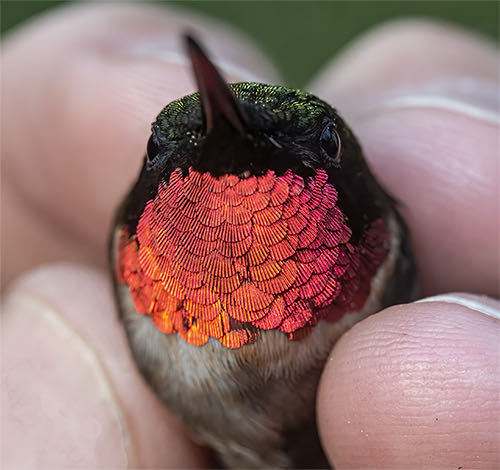
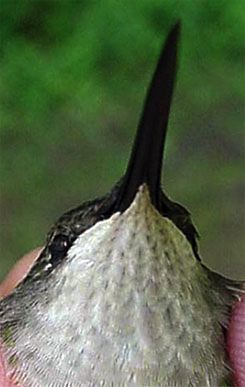 but we WERE amazed this bird was female.
but we WERE amazed this bird was female. 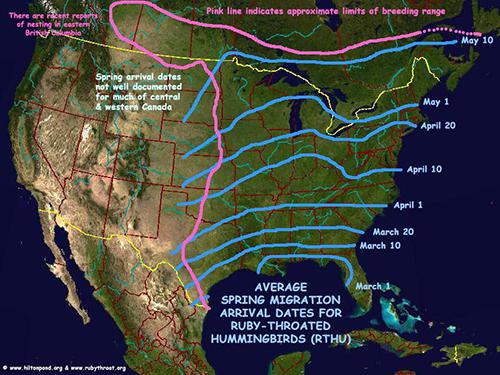
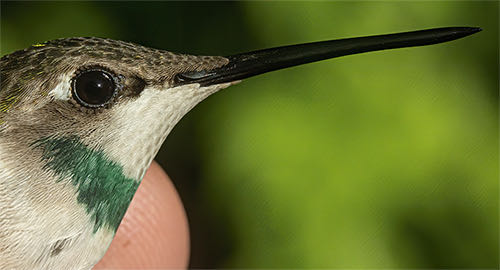
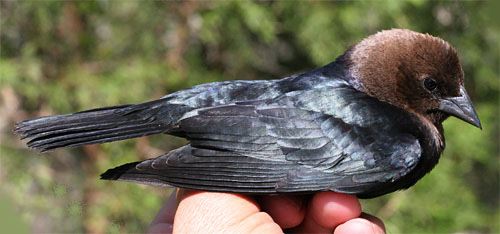
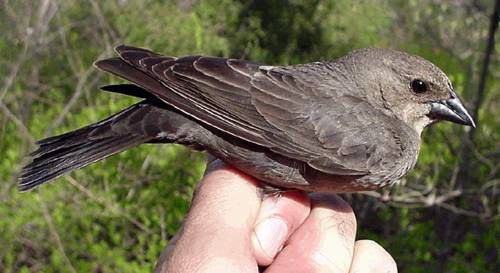

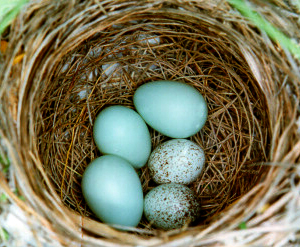 Imagine a Yellow Warbler trying to keep up with a cowbird fledgling at least twice its size!
Imagine a Yellow Warbler trying to keep up with a cowbird fledgling at least twice its size! 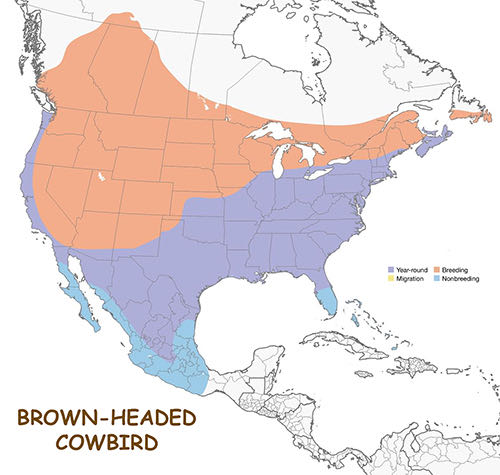










 Please report your
Please report your